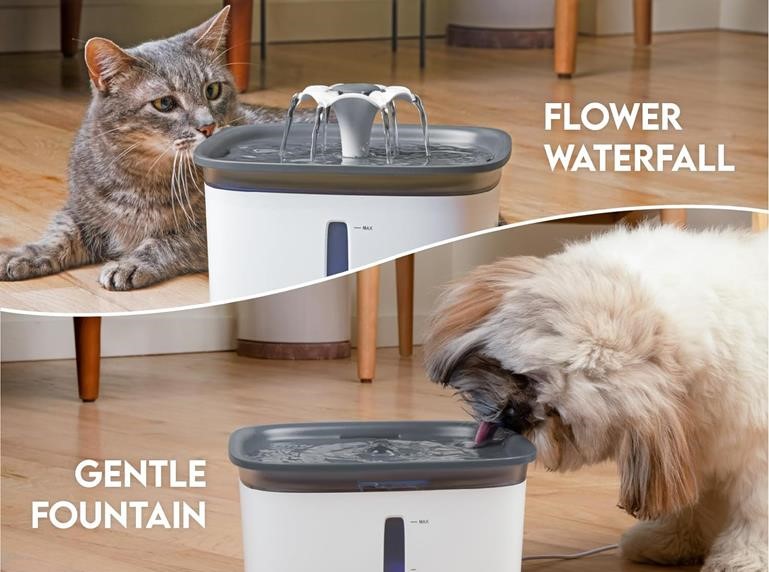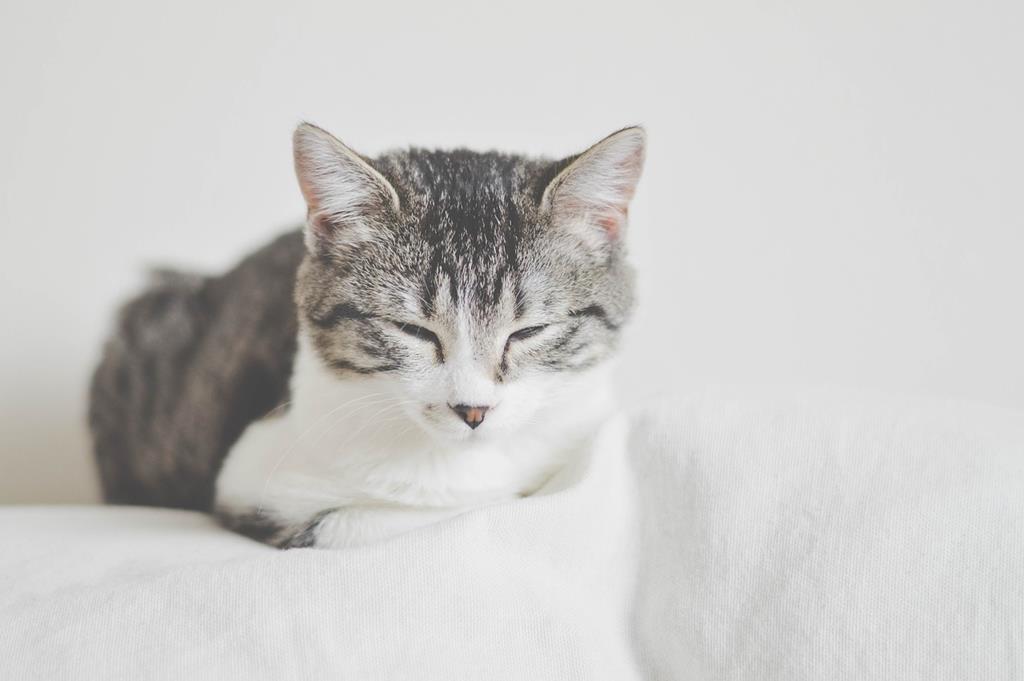Yes, you can wash pet beds. Most pet beds are designed to be machine washable.
Ensuring the comfort and cleanliness of your pet’s bed is essential for their health and your home’s hygiene. Pets, much like humans, benefit from a clean environment, and regularly washing their beds helps eliminate dirt, pet dander, and allergens. Many pet beds come with removable covers that make it easy to maintain a clean resting spot for your furry friend.
Carefully read the manufacturer’s instructions before washing, as some beds may have specific recommendations for temperature and detergent. Quick tip: using a pet-friendly detergent can minimize any risk of skin irritation for your pet. Always make sure the bed is completely dry before letting your pet use it again to prevent mold or mildew growth. Regular laundering not only extends the life of the bed but also keeps your home smelling fresh and ensures a cozy, clean space for your pet to relax.

Credit: www.amazon.com
The Importance Of Regular Pet Bed Cleaning
The cleanliness of where we sleep is crucial for our health. The same holds true for our pets. Cleaning their bed regularly is more than just a chore; it’s an essential part of pet care that ensures well-being and comfort. Let’s delve into why this routine matters so much.
Health Benefits For Pets And Owners
For a healthy home, keeping pet beds clean is vital. Dirt and allergens accumulate in pet beds over time.
- Reduces risk of infections: Bacteria and parasites that threaten pet health lurk in dirty beds.
- Cuts down on allergens: Regular cleaning minimizes dander and dust, helping both pets and humans to breathe easier.
- Maintains skin health: Pets with clean sleeping areas often have healthier skin.
Cleaning can ensure a safer environment for everyone in the household.
Extending The Life Of Pet Beds
Regular maintenance can make pet beds last longer. This means your pets can enjoy their favorite snoozing spot for years.
| Cleaning Frequency | Benefit |
|---|---|
| Weekly vacuuming | Removes fur and loose dirt, preventing fabric wear. |
| Monthly washing | Cleans deep, protecting the bed’s material. |
| Spot-cleaning spills | Prevents stains, keeping the bed looking new. |
A clean pet bed can mean fewer replacements and thus, cost savings. Proper care lets the bed offer comfort through the pet’s lifetime.

Credit: www.martinezanimalhospital.net
Identifying Washable Pet Beds
When it comes to caring for your furry friend, keeping their bed clean and snug is crucial. But not all pet beds are equal in the laundering department. Identifying which beds can take a spin in the machine can save you time and effort.
Materials And Care Tags Explained
Understanding the fabric and care instructions is the first step to a clean pet bed. Beds come in various materials like polyester, cotton, or fleece. Some have removable covers that are machine washable. Look for a care tag that details washing instructions. The symbols on these tags are guides to water temperature, drying methods, and whether or not to use bleach.
- Machine Wash Symbol: A tub icon indicates you can machine wash the bed.
- Temperature: A dot inside the tub suggests water temperature—more dots for hotter water.
- No Bleach: A triangle crossed out means do not use bleach.
- Tumble Dry: A circle inside a square suggests it can be tumble dried.
Tips For Choosing Machine-washable Beds
When shopping for your pet’s bed, keep these pointers in mind:
- Check the Label: Always read the label for care instructions.
- Simplicity Matters: Beds with fewer components are easier to wash.
- Look for Zippers: Removable covers make cleaning straightforward.
- Durability Counts: Durable materials survive frequent washing.
- Water-Resistant: A water-resistant base protects the floor.
Choosing a bed with these features ensures a clean and fresh resting place for your pet.
Preparation For Washing Pet Beds
Caring for your pet means keeping their bedding clean and comfortable. Before tossing the pet bed into the wash, it’s vital to prepare it properly. This ensures a more effective clean and prolongs the life of the bed. Follow these steps to get your pet’s bed ready for a thorough wash.
Removing Hair And Debris
Pet beds often gather hair, dirt, and small debris. These can clog your washing machine. To prevent this, start with these simple steps:
- Shake out the bed outside to get rid of loose dirt and hair.
- Use a vacuum with an upholstery attachment for deeper cleaning.
- Consider a lint roller or tape for stubborn hairs.
- Remove any covers that are machine washable.
Pretreating Stains And Odors
Pets can leave behind stains and odors that need special attention. Pretreating helps ensure these don’t become permanent.
- Spot clean any visible stains with a pet-safe detergent.
- Apply an enzyme cleaner to areas with odor or set-in stains.
- Allow the cleaner to sit for the recommended time before washing.

Credit: www.amazon.com
Step-by-step Cleaning Process
Your beloved pet’s bed is more than just fluff and fabric—it’s their sanctuary. Ensuring it’s clean not only keeps your pet cozy but maintains a fresh home. Follow this simple step-by-step process to wash pet beds safely and thoroughly.
Machine Washing Instructions
Before machine washing, check the care label. Most pet beds have removable covers. Remove any excess hair with a vacuum or lint roller. Pre-treat stains using pet-safe detergent.
- Insert the cover in the washing machine.
- Use a gentle cycle with warm water.
- Opt for a mild, pet-safe detergent.
- Avoid bleach as it can harm fabrics and pets.
- Rinse thoroughly to remove all soap residues.
Hand Washing Techniques
For beds without machine-washable covers, hand washing is key. Prepare a cleaning solution with warm water and pet-safe detergent in a tub or sink.
- Submerge the bed fully and let it soak.
- Gently scrub to remove stains and dirt.
- Rinse well with clean water.
- Squeeze out excess water without twisting the bed.
Drying Your Pet Bed Properly
Drying is critical for preventing mold and odor. For machine-washable covers:
- Tumble dry on low heat or air dry.
- Ensure the bed is completely dry before use.
For the rest of the bed:
- Press gently to remove excess water.
- Lay flat in a well-ventilated area.
- Avoid direct sunlight to prevent fading.
- Fluff to maintain shape after drying.
Maintaining A Clean Bed Between Washes
Caring for your pet’s bed is crucial to their comfort and your home’s cleanliness. While regular washing is necessary, it’s also important to maintain a clean bed between washes. This helps prevent odors, keeps your pet’s skin healthy, and extends the bed’s life. Follow these simple maintenance tips to ensure your pet’s bed remains fresh every day.
Daily Maintenance Tips
Keep your pet’s bed free from dirt and hair with daily upkeep. Here’s how:
- Shake it out: Take the bed outside and give it a good shake to remove loose fur and dirt.
- Vacuum: Use a handheld vacuum or an upholstery attachment to clean the bed’s surface thoroughly.
- Spot clean: Address spills quickly with a cloth and pet-friendly cleaner.
- Cover it up: Use a washable cover to protect the bed; swap it out regularly.
Deodorizing Sprays And Solutions
Battle bed odors with natural, safe remedies:
| Deodorizer Type | Usage |
|---|---|
| Baking Soda | Sprinkle on the bed, let sit, and vacuum it up. |
| Homemade Sprays | Mix water and essential oils, then spritz lightly. |
| Enzyme Cleaners | Use specially formulated pet cleaners for tougher odors. |
When To Replace: The Lifespan Of Pet Beds
Like our own cozy beds, pet beds also have a shelf-life. To ensure your furry friend’s comfort and health, it’s crucial to recognize when a pet bed needs replacing. A typical pet bed can last anywhere from one to several years depending on the quality, material, and frequency of use. Regular washing extends its lifespan, but over time, all beds succumb to wear and tear.
Signs Of Wear And Tear
Keep an eye out for these indicators that suggest it’s time for a new bed:
- Torn fabric or exposed foam compromises the bed’s safety.
- Stubborn odors even after washing suggest bacteria buildup.
- Flattened padding means less comfort and support.
- Lumps indicate uneven filling, uncomfortable for your pet.
- Frequent allergic reactions in pets can be due to dust mites in old beds.
Upgrade Options For Comfort And Hygiene
When choosing a new bed, consider these features for maximum comfort and cleanliness:
- Removable and Washable Covers: Ideal for keeping the bed fresh and clean.
- Antimicrobial Materials: Help prevent the growth of bacteria and odors.
- Memory Foam: Provides support and comfort, adapting to your pet’s body.
- Water-Resistant: Good for preventing moisture from accidents or spills.
- Durable Fabrics: Protects the bed from clawing and chewing.
Selecting the right bed ensures a healthy and comfy resting place for your pet for years to come.
Frequently Asked Questions For Can You Wash Pet Beds
Can You Machine Wash All Pet Beds?
Not all pet beds are machine washable. Check the label for cleaning instructions. Beds with removable covers are typically machine washable. If no label is present, hand wash is safer.
How Often Should You Wash A Pet Bed?
Wash your pet’s bed every one to two weeks. This frequency helps reduce allergens and bacteria. For pets with allergies or skin conditions, more frequent washing may be necessary.
Can Drying A Pet Bed Damage Its Shape?
High heat can warp or shrink pet beds, affecting their shape. Air dry or use a low-heat setting when machine drying. Fluff the bed manually after drying to maintain its shape.
What Cleaning Products Are Safe For Pet Beds?
Use mild, pet-safe detergents for washing pet beds. Avoid harsh chemicals, like bleach or strong fragrances, which can irritate your pet’s skin and nose.
Conclusion
Caring for your pet involves maintaining a clean environment for them to thrive. Washing pet beds is clearly possible and necessary. Embrace a routine that includes regular cleaning, using appropriate methods for different bed types. Keeping your furry friends cozy and hygienic contributes to their happiness and health.
Remember, a clean bed equals a happy pet!


